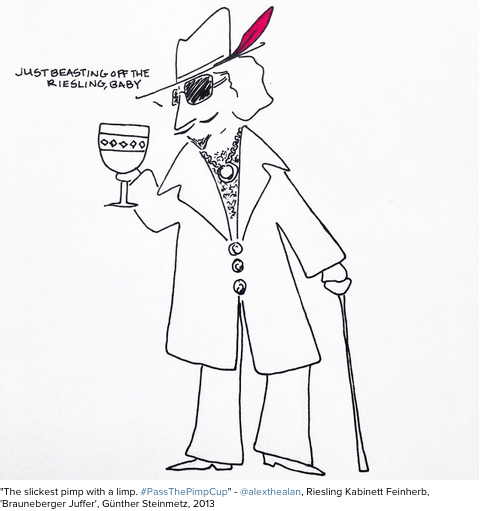
Even as size-acceptance movements continue to grow in the Western world, people still fear fat. They worry about becoming fat themselves or criticize it in others, often under the troll-like guise of caring for a stranger’s health. But that is not the case when it comes to feederism: a multifaceted community of people with a fetish for eating and weight gain.
Barring a few eye-opening pieces from members of the feederism community themselves, the portrait most people get of feederism is one of extremes—stories of the world’s fattest men and women or think pieces that question whether the feeder-feedee relationship is abusive.
In order to get a more complete understanding of what it actually means to be part of the feederism community, I headed to Fantasy Feeder, an online hub where those who “want to be fat or to fatten” come together to chat about everything from recipes and lifestyle tips to weight gain and BDSM.
For many of those who are into feederism, an interest in weight and fatness came at a young age. “I was always attracted to fat people,” explains Patch Lumpkin, a longstanding feedee and gainer within the community. “I loved the way their body looked and I loved seeing them eat. When I was a kid, I would stuff my clothes with pillows and pretend to be super-fat. I also loved playing in the mud and being messy with food. It gave me a thrill even before I knew it was sexual.”
Mutual gainer Martin Silva reflects: “It started pretty young—I’d say, like, age 14. I liked the idea of girls getting fatter. I would think about what they would look like with 20 extra pounds, then 40, etc., and found that very erotic,” he tells me. “At the same time, I found gaining weight myself to be a turn-on—being fed by a female feeder. So I finally settled on mutual gaining, as both arouse me.”
Gaining is something that many feedees do on their own in the beginning, perhaps with some encouragement from people in the online feeder community. But more often than not, the feeder-feedee relationship isn’t there from the beginning in any direct way.
“[My gaining] is mostly personal, but I do get encouragement from feeders on Kik,” says feedee Kyle Chessner. A direct or indirect feeder partner isn’t always necessary for feedees to enjoy the pleasure that comes from a love of fatness and feeling themselves get bigger, or the playful and sometimes not-so-playful humiliation at their gains.
For some, the act of feeding can be as simple as eating throughout the day. “I eat carbs, and a lot of them,” says Chessner. “I eat almost constantly and am rarely seen without food. I love waking up in the morning and examining my body in the mirror and trying to visually track my gain.”
For others, feeding can range from a weekly indulgence to planning something that’s more of a production: “Basically, food with foreplay,” Silva says.
“Sometimes the hottest [feeding sessions] are in public, where you have to try to not look so turned on,” says Lumpkin. “In private, you can get wild and mix sex directly with feeding. I enjoy being encouraged to eat with sexual pleasure. Like, if I’m eating, I get a reward with stimulation, or spanked/pegged if I don’t eat like a good piggy. I love being teased about how fat I am and how fat I will become—being measured, weighed, made to wear clothes that are too tight, so as I eat the buttons pop.”
While stuffing can be incredibly erotic for some feedees, huge amounts of weight gain are rarely the goal. “Only a small number ever take it to those levels of extreme obesity,” Silva notes. “I find a female going from 120 [pounds] to maybe 165 ideal. Others might say 165 is just a starting point, and say 200, etc.”
Lumpkin agrees. “Each body is different. If you are experiencing health issues due to weight, most feedees will drop pounds until they get to a safe weight. Like BDSM—safe, sane, consensual,” he adds. “Some of us may fantasize about being immobile [due to weight] but in reality we still want active lives.”
The feeder-feedee relationship is most often one of a dominant and a submissive, sharing certain characteristics with BDSM culture. But as with any BDSM relationship, the erotic transaction must be mutual—both parties have to enjoy the weight gain. And as with BDSM, responsible feeders and feedees take their roles very seriously, and are careful to practice in safe ways that respect their partners’ boundaries.
But that isn’t always the case. On the extreme end of the feedee spectrum are people like Donna Simpson, the New Jersey woman and feedee cam-girl who once famously strove to reach 1,000 pounds with the encouragement of her then-fiancé, Philippe Gouamba. Simpson has since turned away from the life of eating in front of a webcam, moved back to Ohio, and dropped from 600 pounds to 470 in order to take better care of her two children.
“All [Philippe] could see was my belly, my figure—not that I had a brain or that I should be going to school,” Simpson tells me. “I guess you could say the same about the other side as well—when women look exactly like [they do] in Vogue magazine and men only see you for your body like that.”
While Simpson may have given up her extreme goals, she’s still not entirely turned off by the idea of a feeder-feedee relationship. “If I was with a guy who thinks it’s kind of cute to feed and likes if you gain a little bit of weight, then I wouldn’t mind that,” she says. “Like, ‘I think it’s kind of cool if you eat another slice of pizza’ or ‘I’ll bring you home a box of seven donuts.’ But the whole extreme thing is too much.”
Indeed, her relationship unraveled because the realities of such weight gain often clashed with her partner’s fantasy. “Philippe always wanted me to eat and gain and eat and gain, but then would get angry with me because I wasn’t able to vacuum the floor,” Simpson says. “You can’t want someone to be immobile but then get mad when they can’t go walk in the park with you. It becomes a form of abuse when it’s to that extreme. You have to be really selfish, to be an intensely hardcore feeder, to not want your partner to be able to walk around and enjoy life.”
As Simpson’s experience demonstrates, feeding is not inherently abusive, but it can be exploited by abusive people.
“Philippe was a bona fide sociopath. He once told me there was this woman who had no arms and no legs, and her husband carries her around like that in a box,” Simpson tells me. “And he thought that sounded like the perfect woman.”
Lumpkin concedes that while most people in feeder-feedee relationships are perfectly well adjusted, the accepting nature of the community can be enticing to those who are not. “There is an attraction to this lifestyle by the enabler and victim,” he says. “It’s a safe place to hide in an all-accepting community and family that will unconditionally love you. People like that need help and to be in their right mind before they make modification to their body with full understanding, full control.”
It’s the sensationalized cases of extreme gaining and abuse that gives feederism a bad name, keeping many (but not all) feeders and feedees from being fully open about their lifestyle. As Lumpkin puts it, “There are challenges to living this lifestyle, no doubt. We wear our fetish.”


![Dane Nakama, Hawaiʻi Food & Wine Festival [5]](https://i0.wp.com/images.vice.com/munchies/wp_upload/Dane-Nakama-Hawai%CA%BBi-Food-Wine-Festival-5.jpg)
![Dane Nakama, Hawaiʻi Food & Wine Festival [3]](https://i0.wp.com/images.vice.com/munchies/wp_upload/Dane-Nakama-Hawai%CA%BBi-Food-Wine-Festival-3.jpg)

![Dane Nakama, Hawaiʻi Food & Wine Festival [6]](https://i0.wp.com/images.vice.com/munchies/wp_upload/Dane-Nakama-Hawai%CA%BBi-Food-Wine-Festival-6.jpg)
![Dane Nakama, Hawaiʻi Food & Wine Festival [2]](https://i0.wp.com/images.vice.com/munchies/wp_upload/Dane-Nakama-Hawai%CA%BBi-Food-Wine-Festival-2.jpg)
![Dane Nakama, Hawaiʻi Food & Wine Festival [7]](https://i0.wp.com/images.vice.com/munchies/wp_upload/Dane-Nakama-Hawai%CA%BBi-Food-Wine-Festival-7.jpg)














